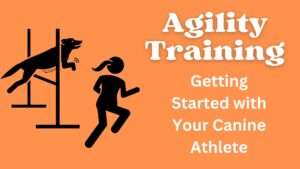Are you an adventure enthusiast who loves spending time outdoors with your furry companion? Camping with your dog can be an incredibly rewarding experience, fostering a stronger bond between you and your pet while immersing both of you in the beauty of nature. But before you hit the trails, it’s essential to be well-prepared to ensure a safe and enjoyable adventure for you and your canine friend. In this ultimate guide, we’ll cover everything you need to know about camping with your dog, from essential tips to must-have gear.
Contents Overview
1. Preparing for the Trip
Preparing for a camping trip with your dog involves several essential steps to ensure a safe and enjoyable experience for both you and your furry companion. Here’s a detailed breakdown of what you need to do before hitting the trails:
- Health Check:
- Veterinary Visit: Schedule a visit to the veterinarian well in advance of your camping trip. Ensure your dog is up-to-date on vaccinations, including rabies and distemper, and in good overall health for outdoor activities.
- Medications: If your dog is on any medications or preventive treatments, such as flea and tick prevention or heartworm medication, ensure you have an ample supply for the duration of your trip.
- Training:
- Obedience Training: Basic obedience training is crucial for camping with your dog. Ensure your dog reliably responds to commands like “come,” “stay,” and “leave it” to maintain control in outdoor settings.
- Socialization: Expose your dog to various outdoor environments and social situations to help them feel comfortable and confident during the camping trip.
- Packing List:
- Food and Water: Pack enough food for your dog’s daily meals, plus extra in case of unexpected delays. Bring along plenty of fresh water to keep your dog hydrated, as water sources at the campsite may not always be safe for drinking.
- Bowls: Pack collapsible bowls for food and water to save space and make feeding your dog on the go convenient.
- Bedding: Bring along a comfortable sleeping pad or blanket for your dog to rest on inside the tent or shelter.
- Leash and Collar: Ensure your dog wears a sturdy collar with ID tags containing your contact information at all times. Pack a leash for walks and to keep your dog secure at the campsite.
- First Aid Kit: Prepare a first aid kit specifically for your dog, including items such as gauze, antiseptic wipes, tweezers (for removing ticks), and any medications your dog may need.
- Toys and Comfort Items: Bring along your dog’s favorite toys or comfort items to help them feel at ease in unfamiliar surroundings.
- Waste Bags: Pack plenty of biodegradable waste bags to clean up after your dog and properly dispose of waste at the campsite.
- Towel or Blanket: Bring a towel or blanket to wipe down your dog after outdoor activities or in case of wet weather.
- Emergency Contact Information: Carry a list of emergency contact numbers, including your veterinarian’s contact information and nearby veterinary clinics or animal hospitals.
By thoroughly preparing for your camping trip with your dog, you can ensure a smooth and enjoyable experience for both you and your furry friend. Taking the time to address health, training, and packing considerations will set the stage for a memorable outdoor adventure together.
2. Choosing the Right Campsite
Selecting the perfect campsite is crucial for a successful camping trip with your dog. Consider the following factors when choosing a location:
- Pet-Friendly Policies:
- Research: Before making reservations, research campgrounds that welcome pets. Look for campgrounds with pet-friendly policies and designated areas where dogs are allowed.
- Rules and Regulations: Familiarize yourself with the campground’s rules and regulations regarding pets. Some campgrounds may have specific guidelines regarding leash requirements, designated pet areas, and waste disposal.
- Safety:
- Secure Boundaries: Choose a campsite with secure boundaries, such as fences or natural barriers, to prevent your dog from wandering off into the wilderness.
- Terrain: Consider the terrain of the campsite and surrounding area to ensure it’s safe and suitable for your dog. Avoid campsites near steep cliffs, bodies of water with strong currents, or areas with hazardous wildlife.
- Activities:
- Dog-Friendly Trails: Look for campgrounds with nearby trails and outdoor activities suitable for dogs, such as hiking, swimming, or walking paths. Check if there are any restrictions on dogs accessing certain trails or areas within the campground.
- On-Site Amenities: Consider amenities available at the campground, such as dog parks, pet waste stations, or designated swimming areas for dogs.
- Accessibility:
- Distance from Home: Consider the distance from your home to the campground, especially if you’re traveling with your dog in a car. Choose a campground within a reasonable driving distance to minimize stress on your dog during travel.
- Accessibility: Ensure the campground is easily accessible by car and has parking areas near campsites for convenience.
- Reviews and Recommendations:
- Online Reviews: Read reviews from other campers who have visited the campground with their dogs. Pay attention to feedback regarding pet amenities, cleanliness, and overall pet-friendly atmosphere.
- Recommendations: Seek recommendations from friends, family members, or online communities who have experience camping with dogs. They may be able to suggest pet-friendly campgrounds that meet your specific needs and preferences.
- Reservations:
- Book in Advance: Once you’ve selected a suitable campground, make reservations well in advance to secure your spot, especially during peak camping seasons. Ensure you notify the campground staff that you’ll be camping with a dog to confirm pet-friendly accommodations.
By carefully considering factors such as pet-friendly policies, safety, activities, accessibility, and reviews, you can choose the right campsite for a memorable camping experience with your dog. Taking the time to research and plan ahead will help ensure a safe, enjoyable, and stress-free adventure for both you and your furry companion.
3. Camping Etiquette with Your Dog
Maintaining proper camping etiquette when bringing your dog along is essential to ensure a positive experience for both you and other campers. Here’s a comprehensive overview of camping etiquette with your dog:
- Respect Wildlife:
- Leash Policy: Keep your dog on a leash at all times, even if the campground allows off-leash activities. This helps prevent your dog from chasing wildlife or disturbing other campers.
- Controlled Exploration: Supervise your dog closely when exploring the campground or nearby trails to prevent them from disturbing local wildlife or habitats.
- Leave No Trace: Follow the principles of Leave No Trace by minimizing your impact on the environment and wildlife. Avoid letting your dog chase or harass wildlife, and ensure they stay on designated trails to protect sensitive ecosystems.
- Noise Control:
- Barking Management: Minimize excessive barking to avoid disturbing the tranquility of the campground and other campers. Address any barking behavior promptly through training and positive reinforcement.
- Quiet Hours: Respect designated quiet hours established by the campground to minimize noise disruptions for fellow campers, especially during early morning and late evening hours.
- Clean Up:
- Waste Disposal: Always clean up after your dog and properly dispose of waste in designated receptacles or pet waste stations. Carry biodegradable waste bags with you to ensure you can clean up after your dog wherever you go.
- Campsite Maintenance: Keep your campsite clean and free of debris, including your dog’s waste. Dispose of waste promptly and ensure the area is tidy before leaving the campground.
- Pack Out Waste: If camping in remote areas without designated waste facilities, pack out your dog’s waste in sealed bags to dispose of properly when you return to civilization.
- Respect for Other Campers:
- Leash Courtesy: Respect other campers’ space by keeping your dog on a leash and under control at all times. Avoid allowing your dog to approach or interact with other campers or their belongings without permission.
- Ask Permission: Before approaching other campers with your dog, ask if they are comfortable around dogs and respect their wishes if they prefer to keep their distance.
- Campfire Safety:
- Supervision: Keep a close eye on your dog around the campfire to prevent burns or injuries. Ensure they stay a safe distance away from flames and hot embers.
- Restraint: If your dog tends to be curious or drawn to the campfire, consider using a leash or tie-out to keep them safely away from the flames.
By adhering to these camping etiquette guidelines, you can ensure a harmonious and enjoyable camping experience for yourself, your dog, and fellow campers. Respect for the environment, wildlife, and other campers is key to fostering a positive camping atmosphere while creating lasting memories with your furry companion.
4. Safety Tips for Camping with Your Dog
Ensuring the safety of your dog during a camping trip is paramount to a successful outdoor adventure. Here are comprehensive safety tips to keep in mind:
- Identification:
- Collar and Tags: Ensure your dog wears a sturdy collar with identification tags containing your contact information, including your name and phone number. This will help reunite you with your dog if they become lost.
- Microchipping: Consider microchipping your dog as an additional form of identification. Keep the microchip information updated with your current contact details.
- Supervision:
- Never Leave Unattended: Never leave your dog unattended at the campsite, especially in unfamiliar surroundings. Supervise them closely to prevent accidents, injuries, or getting lost.
- Water Safety: Keep a close watch on your dog around bodies of water, such as lakes, rivers, or streams. Ensure they wear a life jacket if swimming and avoid strong currents or deep water.
- Weather Considerations:
- Temperature Awareness: Be mindful of weather conditions and how they affect your dog. Avoid camping in extreme heat or cold, and provide adequate shade and water to prevent heatstroke during hot weather.
- Hypothermia Prevention: Protect your dog from hypothermia by providing insulation and warmth during cold weather camping trips. Consider bringing along a doggy sweater or jacket for added warmth.
- Health Maintenance:
- Regular Breaks: Allow your dog plenty of rest breaks during hikes or outdoor activities to prevent exhaustion and dehydration. Bring along a portable water bowl and offer frequent water breaks.
- Tick and Flea Prevention: Use tick and flea prevention products recommended by your veterinarian to protect your dog from parasites commonly found in outdoor environments. Check your dog regularly for ticks and remove them promptly to reduce the risk of tick-borne diseases.
- Wildlife Awareness:
- Avoid Encounters: Minimize the risk of wildlife encounters by keeping your dog on a leash and under control at all times. Teach them to leave wildlife alone and avoid chasing or approaching animals.
- Bear Safety: If camping in bear country, take extra precautions to prevent bear encounters. Store food securely in bear-proof containers, avoid leaving food scraps around the campsite, and follow proper bear safety protocols.
- First Aid Preparedness:
- Canine First Aid Kit: Pack a first aid kit specifically for your dog’s needs, including items such as bandages, antiseptic wipes, tweezers (for tick removal), and any medications your dog may require.
- Emergency Vet Contact: Carry contact information for emergency veterinary services or nearby animal hospitals in case of injury or illness requiring immediate medical attention.
- Restraint and Boundaries:
- Leash Use: Keep your dog on a leash at all times, especially in areas where wildlife may be present or where off-leash activities are prohibited. This helps prevent your dog from wandering off or getting into dangerous situations.
- Tie-Outs: Consider using a tie-out or portable dog stake to secure your dog at the campsite, allowing them to move around safely without wandering off.
By following these safety tips and remaining vigilant during your camping trip, you can help ensure the well-being and security of your dog in outdoor environments. Prioritizing safety measures will allow you to relax and enjoy your camping experience while keeping your canine companion safe and happy.
5. Essential Gear for Camping with Your Dog
When preparing for a camping trip with your dog, having the right gear can make all the difference in ensuring their comfort, safety, and well-being. Here’s a detailed look at essential gear to pack for your canine companion:
- Dog-Specific Tent or Shelter:
- Purpose: Provide your dog with their own shelter to sleep and rest comfortably at the campsite.
- Options: Choose from dog-specific tents, portable kennels, or lightweight shelters designed for outdoor use.
- Size: Select a tent or shelter size appropriate for your dog’s breed and size to ensure they have enough room to move around comfortably.
- Portable Water and Food Bowls:
- Convenience: Pack collapsible or lightweight bowls for convenient hydration and feeding on the go.
- Hydration: Ensure your dog has access to clean, fresh water at all times to prevent dehydration during outdoor activities.
- Food: Bring along portable food bowls for feeding your dog their regular meals while camping.
- Reflective Gear:
- Visibility: Attach reflective accessories to your dog’s collar, leash, or harness to increase visibility during nighttime activities or low-light conditions.
- Safety: Reflective gear helps make your dog more visible to others, reducing the risk of accidents or getting lost in the dark.
- Dog Backpack:
- Purpose: Outfit your dog with a backpack to help them carry their own supplies, such as water bottles, food, and snacks.
- Distribution: Distributing weight evenly in a backpack can help your dog feel more comfortable and engaged during hikes or outdoor adventures.
- Size and Fit: Choose a backpack size and fit appropriate for your dog’s breed and size, ensuring it sits snugly and comfortably on their back.
- Dog Bedding:
- Comfort: Bring along a comfortable sleeping pad or blanket for your dog to rest on inside the tent or shelter.
- Insulation: Provide insulation from the cold ground and cushioning for your dog’s joints and muscles while sleeping.
- Leash and Collar with ID Tags:
- Control: Ensure your dog wears a sturdy collar with ID tags containing your contact information at all times.
- Safety: Use a leash to keep your dog under control at the campsite and during outdoor activities, preventing them from wandering off or getting into potentially dangerous situations.
- First Aid Kit for Dogs:
- Preparedness: Pack a first aid kit specifically for your dog’s needs, including items such as bandages, antiseptic wipes, tweezers for tick removal, and any medications your dog may require.
- Emergency: Be prepared to address minor injuries or ailments that may occur during outdoor adventures, ensuring your dog receives prompt and appropriate care.
- Toys and Comfort Items:
- Entertainment: Bring along your dog’s favorite toys or comfort items to help them feel at ease in unfamiliar surroundings.
- Distraction: Toys can provide mental stimulation and entertainment for your dog during downtime at the campsite or while resting in the tent.
By packing these essential gear items for your dog, you can ensure they have everything they need to stay comfortable, safe, and happy during your camping trip. Prioritize your dog’s needs and comfort to create a memorable outdoor adventure for both of you.
Bottom Line
Camping with your dog can be an enriching experience that strengthens your bond while allowing both of you to enjoy the great outdoors. By following the tips and guidelines outlined in this ultimate guide, you can ensure a safe, enjoyable, and memorable camping adventure with your canine companion. So pack your bags, leash up your dog, and get ready to embark on an unforgettable outdoor journey together!


























+ There are no comments
Add yours